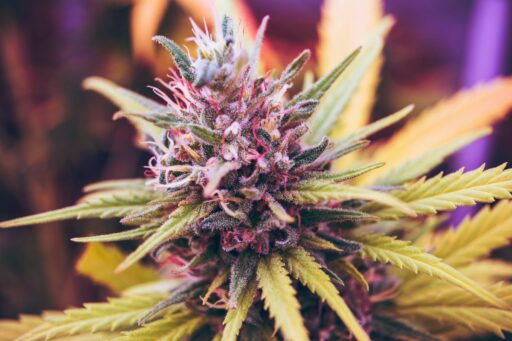Canada’s journey with medical marijuana has been a progressive one, navigating through various regulatory changes and societal shifts. Starting with the establishment of a medical marijuana program in 2001, Canada has evolved its policies to accommodate and regulate the medicinal use of cannabis. This guide provides a comprehensive look into the current PA Medical Marijuanas System, offering insights into the legal landscape, patient access, purchasing protocols, and the broader impacts on the economy and military personnel.
Key Takeaways
- Canada’s medical marijuana program, initiated in 2001, transitioned from homegrown and Health Canada sales to a commercial sector in 2013.
- The Cannabis Act, effective from October 17th, 2018, made Canada the second country to legalize cannabis for both recreational and medical use.
- Provincial and territorial variances exist in the regulation of medical marijuana, affecting access and usage across the country.
- Economic benefits of the regulated cannabis market include competition with the black market, tax revenue generation, and job creation.
- Military regulations permit service members to use legal cannabis with restrictions, reflecting the impact of legalization on military policies.
Navigating the Medical Marijuana Landscape in Canada

Historical Overview of Medical Marijuana Regulations
The journey of medical marijuana in Canada has been marked by significant regulatory milestones. In 2001, Health Canada initiated a medical marijuana program, which allowed individuals access to home-grown cannabis or direct sales from the government. This initial approach was later transformed in 2013, establishing a commercial sector for cannabis cultivation and distribution.
The pivotal moment for cannabis in Canada came with the legalization of medicinal use under the Marihuana for Medical Purposes Regulations. These regulations were eventually succeeded by the Access to Cannabis for Medical Purposes Regulations, laying the groundwork for the current legal framework.
The evolution of medical marijuana regulations reflects Canada’s progressive stance on cannabis, balancing control with accessibility.
The table below outlines the key dates in the history of medical marijuana regulations in Canada:
| Year | Event |
|---|---|
| 1923 | Cannabis criminalized |
| 2001 | Health Canada’s medical marijuana program begins |
| 2013 | Transition to commercial cultivation and distribution |
| 2018 | Cannabis Act comes into effect, legalizing recreational use |
These regulatory changes have not only shaped the landscape of medical marijuana but also paved the way for the legalization of recreational cannabis, making Canada the second country to do so.
Understanding the Access to Cannabis for Medical Purposes Regulations
The Access to Cannabis for Medical Purposes Regulations (ACMPR) is a cornerstone of Canada’s medical marijuana framework. Established by Health Canada, these regulations define the legal boundaries for the cultivation, distribution, and use of medical cannabis. The ACMPR replaced the earlier Marihuana for Medical Purposes Regulations, streamlining the process for patients to access cannabis for treatment.
Under the ACMPR, patients must obtain a medical document from a healthcare practitioner. This document functions similarly to a prescription, allowing patients to register with licensed producers (LPs). Here’s a brief overview of the steps involved:
- Obtain a medical document from a healthcare practitioner.
- Choose a licensed producer and register as a patient.
- Order medical cannabis products through mail order from the LP.
The transition to the ACMPR has facilitated a more traditional commercial sector for cannabis cultivation and distribution, with a growing number of licensed producers now serving patients across Canada.
As of late 2016, there were 36 authorized producers, which expanded to 82 by December 2017. This expansion reflects the evolving landscape of medical marijuana in Canada, where regulations continue to adapt in response to patient needs and industry growth.
The Transition from Health Canada’s Direct Sales to Commercial Cultivation
The shift from Health Canada’s direct involvement in the sale of medical marijuana to a commercially-driven cultivation landscape marked a significant change in the Canadian medical cannabis industry. The establishment of the Access to Cannabis for Medical Purposes Regulations (ACMPR) in 2013 paved the way for licensed producers to take the helm. This transition aimed to create a more traditional and structured market for cannabis cultivation and distribution.
Under the ACMPR, licensed producers became the cornerstone of the medical marijuana supply chain. By late 2016, Health Canada had listed 36 authorized producers, with sales permitted exclusively through mail order. The number of licenses issued had grown to 82 by December 2017, reflecting the rapid expansion of the industry. However, not all licensed producers were immediately operational, indicating a staggered rollout of commercial cultivation facilities.
The controlled nature of cannabis sales and cultivation remains a key feature of the Canadian system. Only government-licensed retailers can sell, and only licensed producers can grow the product. This regulatory environment ensures that medical marijuana is distributed responsibly and safely.
Despite the structured market, the entry barriers for new craft cannabis producers are significant, akin to those faced by craft brewers. Marketing restrictions, similar to those on tobacco, limit how these companies can promote their products, with plain packaging and a ban on traditional advertising channels like television.
The Legal Framework and Patient Access

The Cannabis Act and Its Implications for Medical Users
With the advent of the Cannabis Act in 2018, Canada took a historic step by legalizing cannabis for both recreational and medical use. This legislation not only decriminalized possession for personal consumption but also established a regulated framework akin to that of alcohol. The Act granted provinces the autonomy to tailor the distribution, sale, and consumption regulations to their specific needs, including setting the legal age for use and determining if cannabis can be consumed in private residences with children present.
The federal government’s approach to cannabis taxation and the projection of significant annual sales underscore the economic implications of this legislation. Medical users, however, are particularly interested in how the Act harmonizes with the Access to Cannabis for Medical Purposes Regulations (ACMPR), ensuring continued access to cannabis for therapeutic purposes.
The Cannabis Act’s alignment with the ACMPR has been crucial in maintaining the availability of medical marijuana for patients who rely on it for treatment.
Medical users must navigate this new landscape, understanding that while the Act simplifies access, it also imposes certain restrictions and responsibilities, similar to those for alcohol consumption.
Provincial and Territorial Regulation Variances
In Canada, the approach to regulating medical marijuana varies significantly across provinces and territories. Each region has the autonomy to shape its own policies, which can lead to a patchwork of regulations affecting everything from possession limits to the ability to grow plants at home.
For instance, while some provinces may allow residents to cultivate a small number of cannabis plants for personal use, others, like Quebec, have imposed bans with fines for possession and cultivation. Legal challenges are ongoing, with groups such as TOBA grown and NORML working to overturn these restrictions.
The diversity in regulations underscores the importance of understanding local laws before engaging in medical marijuana use or cultivation.
The table below provides a snapshot of the regulatory landscape, highlighting key differences that medical marijuana users need to navigate:
| Province/Territory | Home Cultivation Allowed? | Sales Model |
|---|---|---|
| Alberta | Yes | Private |
| Quebec | No | Public |
| Manitoba | No | Hybrid |
| Ontario | Yes | Private |
This variance in regulations not only impacts patients but also shapes the market, influencing the availability and types of products offered.
Securing a Prescription and Registering as a Patient
To access medical marijuana in Canada, patients must navigate a series of steps to ensure compliance with national and provincial regulations. Securing a prescription from a healthcare provider is the first critical step in the process. Once a prescription is obtained, patients must then register with Health Canada and select a licensed producer (LP) from whom they will purchase their cannabis products.
- Obtain a prescription from a healthcare provider.
- Register with Health Canada.
- Choose a licensed producer (LP).
Patients should be aware that the landscape of licensed producers is dynamic, with the number of authorized producers growing significantly since the early days of the medical program. As of late 2017, there were 82 licenses issued under the Access to Cannabis for Medical Purposes Regulations (ACMPR), although not all producers were operational at that time.
It is important for patients to ensure that they are dealing with a reputable and licensed source to avoid any legal issues or health risks associated with unregulated products.
Purchasing and Using Medical Marijuana

Selecting the Right Strain for Your Needs
When venturing into the world of medical marijuana, finding the right strain is crucial for effective treatment. Each strain comes with its own profile of cannabinoids and terpenes, which can affect medical conditions differently. It’s important to start with a small dosage and monitor how it affects your symptoms.
Here are some steps to help you select the most suitable strain:
- Research the most common strains used for your specific medical condition.
- Consult with a healthcare professional or a knowledgeable dispensary staff member.
- Consider the THC/CBD ratio, as well as the presence of other cannabinoids and terpenes.
- Keep track of the strain’s potency, onset of effects, and duration.
Remember, what works for one person may not work for another. Personal experimentation under guidance is key to determining the best strain for your needs.
Always ensure that you are purchasing from a reputable source to guarantee the quality and safety of the product. As the industry evolves, so does the variety of strains available, making it possible to tailor your medical marijuana experience more closely to your health requirements.
Navigating Online Dispensaries and Licensed Producers
With the evolution of the medical marijuana industry in Canada, patients now have the convenience of ordering their medication online. Licensed producers are regulated by Health Canada to ensure safety and quality, and they offer a variety of products through their websites. Online dispensaries operate within a legal framework that allows patients to purchase cannabis after securing a prescription.
To facilitate a smooth transaction, here are some steps to consider:
- Verify the dispensary’s license and product offerings.
- Ensure you meet the age requirement, typically 21 years old.
- Consult with a healthcare provider to determine the appropriate strain and dosage.
- Understand the shipping and delivery policies, as sales are often restricted to mail order.
While the process may seem daunting at first, navigating online dispensaries can be straightforward with the right information and preparation.
Remember, the landscape of online cannabis sales is still evolving, and it’s important to stay informed about the latest regulations and options available to you.
Understanding Dosage, Administration, and Safe Storage
Determining the correct dosage of medical marijuana is crucial for effective treatment and minimizing side effects. Patients should consult with healthcare providers to establish a regimen that suits their individual needs. Dosage can vary widely depending on the condition being treated, the patient’s tolerance, and the form of cannabis used.
Administration methods for medical marijuana are diverse, including inhalation, oral ingestion, and topical application. Each method has its own onset time and duration of effects, which must be considered when planning treatment:
- Inhalation (smoking/vaping): Quick onset, shorter duration
- Oral (edibles/tinctures): Slower onset, longer duration
- Topical (creams/oils): Variable onset, targeted relief
Safe storage of medical marijuana is essential to prevent accidental ingestion, especially by children or pets. Products should be kept in child-resistant containers and stored in a cool, dry place away from direct sunlight. Remember, the guidelines for safe storage are not just recommendations; they are critical for maintaining the integrity of the product and the safety of your household.
It is the responsibility of the patient to ensure that their medical marijuana is stored securely and used in accordance with the prescribed guidelines to maintain safety and efficacy.
The Economic and Social Impact of Medical Marijuana

Medical Marijuana’s Role in Competing with the Black Market
The introduction of medical marijuana into the legal market has been a strategic move to undercut the black market. The high cost of legal cannabis, nearly double that of its illicit counterpart, initially hindered this effort. However, the expansion of product types beyond dried flower and oils, including edibles, topicals, and vaping products, has begun to shift consumer preferences.
The legal market’s struggle for profitability has led to significant changes, including the selling of real estate holdings to finance expansion.
Despite the challenges, there has been a concerted effort to ensure competition within the legal market. The Task Force on Marijuana Legalization and Regulation advocated for the licensing of both large and small producers, with the provinces determining sales modalities. This approach aims to create a diverse and competitive market that can offer a viable alternative to the black market.
The persistence of the black market, with its significantly lower prices, has been a tough competitor for the legal industry. However, recent measures, such as Ontario’s increase in retail licenses, have shown promise in shifting the balance. The table below illustrates the price disparity between legal and black market cannabis, which is a key factor in consumer decision-making:
| Source | Price per Gram (CAD) |
|---|---|
| Legal Market | $10.23 |
| Black Market | $5.59 |
As the legal market adapts and evolves, the hope is that it will continue to erode the black market’s dominance, offering a safer and regulated alternative for consumers.
Economic Benefits: Tax Revenue and Job Creation
The legalization of medical marijuana in Canada has not only transformed the healthcare landscape but also the economic terrain. The government’s taxation of cannabis is projected to generate significant revenue. Early estimates by the Parliamentary Budget Officer (PBO) suggested annual federal tax revenues of $618 million, with the potential to reach billions as the market matures. This is in stark contrast to the previously untaxed $7 billion illegal marijuana industry.
In an effort to ensure fair distribution of tax revenue, a two-year agreement was signed, allocating 75% of the tax to provinces and territories, with the federal government capping its share at $100 million per annum. Any excess is to be redistributed to the provinces. The final retail price of cannabis products includes provincial sales tax, which varies from 5% to 15% depending on the province.
The economic ripple effect of legal cannabis extends beyond tax revenue, fostering job creation and stimulating ancillary markets.
The table below outlines the tax structure agreed upon by the federal and provincial governments:
| Tax Recipient | Percentage | Maximum Federal Take | Provincial Sales Tax |
|---|---|---|---|
| Federal | 25% | $100 million | N/A |
| Provincial | 75% | N/A | 5% – 15% |
The Rise of Craft Cannabis and Consumer Choice
The emergence of craft cannabis producers has introduced a new dynamic to the Canadian cannabis market. These artisans of the industry are optimistic about their role, despite the financial advantages held by larger producers. Craft cannabis is seen as a premium offering, with a focus on quality and variety that appeals to discerning consumers. The comparison to the craft beer industry is apt, as these smaller entities are more agile and able to adapt to consumer demand, potentially shaping the future of cannabis consumption in Canada.
While the market is expected to consolidate, the presence of craft cannabis producers ensures a diverse and vibrant landscape. They face challenges, such as navigating the supply chain and selling their products, but their ability to experiment with strains and increase variety positions them as a valuable segment of the market. The potential for craft cannabis to parallel the success of craft beer hinges on regulatory support and market opportunities.
The craft cannabis movement in Canada represents a shift towards a more personalized and quality-focused approach to cannabis production and consumption.
Despite the hurdles, the craft cannabis sector remains a beacon of innovation and consumer choice in the evolving Canadian cannabis industry.
Military Personnel and Medical Marijuana Use

Cannabis and the Canadian Military: Regulations for Service Members
In September 2018, the Canadian government issued a directive allowing military personnel to use cannabis post-legalization, with specific restrictions tied to their duties. Service members are permitted to consume cannabis, but must adhere to strict guidelines regarding the timing of usage in relation to their responsibilities.
- 8 hours before duty: All personnel
- 24 hours before duty: Personnel operating weapons or vehicles
- 28 days before duty: Members involved in high-risk activities
The regulations are designed to ensure that military operations and the safety of service members are not compromised by the use of cannabis. These measures reflect a balance between respecting the legalization of cannabis and maintaining the high standards of military readiness and performance.
The policy delineates clear boundaries for cannabis consumption relative to service duties, emphasizing the importance of operational readiness and safety. The Canadian Armed Forces have established these rules to navigate the new landscape of legal cannabis while upholding the rigorous demands of military service.
Balancing Duty and Treatment: Restrictions and Guidelines
In the Canadian military, the use of medical marijuana by service members is a delicate balance between ensuring operational readiness and accommodating medical treatment. Service members may use legal cannabis, but must adhere to strict guidelines to maintain the safety and effectiveness of military operations. These restrictions are particularly stringent for those involved in high-risk duties.
- 8 hours prior to duty: all personnel must refrain from cannabis use.
- 24 hours prior to duty: applies to personnel operating weapons or vehicles.
- 28 days before duty: mandatory for members in high-risk activities.
The regulations are designed to prevent impairment while on duty, ensuring that service members are fully capable of performing their tasks without compromise.
While the rules are clear, navigating them requires careful planning by military personnel who are prescribed medical marijuana. The age verification process is also a critical step, not only for service members but also for ensuring responsible access to cannabis-related websites and information, such as the ‘Marijuana News’ section on a WordPress post.
The Impact of Legalization on Military Policies
The legalization of marijuana in Canada has necessitated a reevaluation of military policies to align with the new legal landscape. The Canadian Armed Forces have had to adapt their regulations to ensure that service members can balance their duties with the potential use of medical marijuana, where it is prescribed.
- Service members must adhere to strict guidelines regarding consumption and possession.
- The use of marijuana is prohibited during duty hours and in situations where it could compromise safety or operational effectiveness.
- Policies are in place to address the use of medical marijuana by military personnel, with a focus on treatment and rehabilitation rather than punitive measures.
The shift in policy reflects a broader understanding of marijuana’s medical applications and the importance of supporting service members’ health needs while maintaining military readiness.
In light of these changes, other nations are observing and, in some cases, adjusting their own military policies. For example, the U.S. Navy has expanded its waiver authority to address recruiting challenges, allowing for greater flexibility in the enlistment of individuals who have used marijuana prior to their service.
Conclusion
Navigating the PA Medical Marijuanas System can initially seem daunting, but understanding the historical context and the steps taken towards legalization can provide clarity and reassurance. From the early days of homegrown access to the establishment of a commercial sector in 2013, Canada’s approach to medical cannabis has evolved significantly. Today, with a legal framework in place, users have a clear path to follow for obtaining relief through medical marijuana. It’s important to remember that while the system is designed to ensure safety and control, it also aims to make medical cannabis accessible to those in need. By staying informed and compliant with the regulations, users can effectively manage their health conditions with the support of this progressive program.
Frequently Asked Questions
What is the history of medical marijuana regulations in Canada?
Canada’s medical marijuana program began in 2001, managed by Health Canada. Initially, it allowed people access to homegrown cannabis or sales directly from Health Canada. This changed in 2013 with new regulations establishing a commercial sector for cannabis cultivation and distribution.
How did the Cannabis Act affect medical marijuana users?
The Cannabis Act, which came into effect on October 17, 2018, legalized cannabis for both recreational and medicinal purposes in Canada. It maintained provisions for medical use under the Access to Cannabis for Medical Purposes Regulations, ensuring that patients could still obtain cannabis for medical reasons.
Are there differences in medical marijuana regulations across Canadian provinces and territories?
Yes, while the federal government sets the overarching legal framework, each province and territory can have its own specific regulations regarding the distribution and use of medical marijuana. Patients should check the regulations that apply in their region.
How can I secure a prescription and register as a medical marijuana patient in Canada?
To secure a prescription for medical marijuana in Canada, you need to consult with a healthcare provider who is authorized to prescribe cannabis. Once you have a prescription, you can register as a patient with a licensed producer or through Health Canada, depending on the province or territory.
What restrictions do Canadian military personnel face regarding medical marijuana use?
Canadian military personnel are allowed to use legal cannabis, including for medical purposes, following the legalization in October 2018. However, there are restrictions based on their duties, and service members must cease usage within certain timeframes before performing certain tasks.
What is the economic impact of medical marijuana in Canada?
The medical marijuana sector in Canada has contributed to competing with the black market, generating tax revenue, and creating jobs. The rise of craft cannabis has also increased consumer choice and contributed to the diversity of the market.





